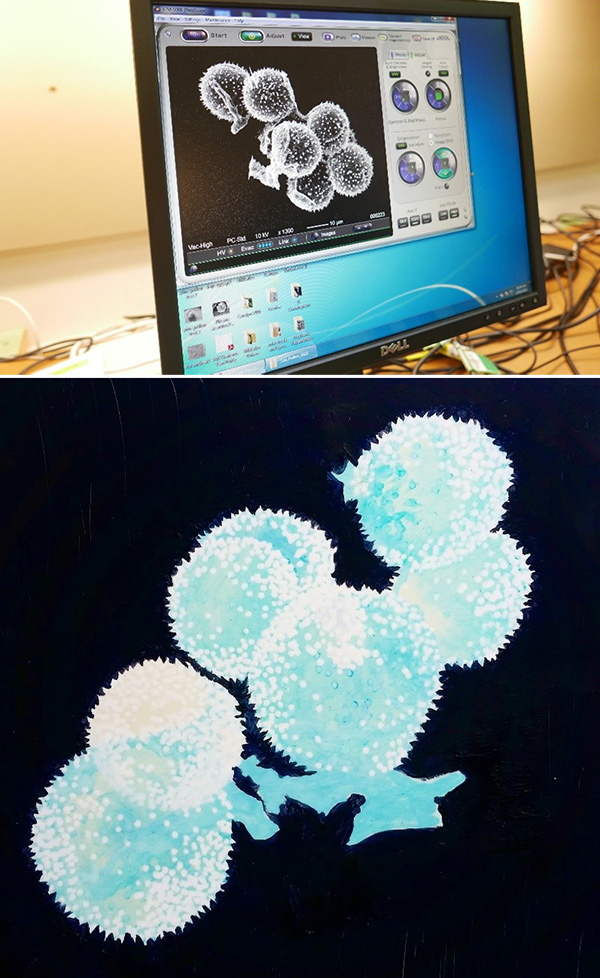During the month of March, I was fortunate to spend time at the State Herbarium with the support of the Guildhouse LimberUp mentorship program. Supporting South Australian Artists, Guildhouse enables artists to access opportunities and make connections with the broader community to support their practice. Through the LimberUp program I identified a valuable opportunity to engage with the State Herbarium to support the current themes in my work.
Over the last few years my art practice has referenced my strong interest in plants at both a macroscopic and microscopic level. Concurrently my art practice has explored the relationship humans have created with bees and our dependence on them to maintain balance within our ecosystem.
The intent of this mentorship was to engage with and observe the unique and specialised environment of the State Herbarium. During the mentorship I observed processes involved in the “exemplar project”, i.e. classifying and curating pollen specimens to develop a pollen library for South Australia’s entire flowering plant flora, the first of its kind in Australia.
This clinical study directly linked to the ongoing theme of bees and their essential role in pollination in my studio practice. During my time at the Herbarium I had the opportunity to observe and partake in microscopy, specimen handling and processing, scientific observation and documentation undertaken as part of the project.

Pollen grains on the screen of the SEM (top) and artwork based on the SEM of pollen images (bottom). Photo & artwork: Rebecca McEwan.
The time with the SEM was invaluable. Previously only being able to see these images online, the opportunity to view the images in real time and manipulate them to gain a 3D perspective was fascinating and enabled me to gain a greater understanding of the pollen’s characteristics. It has allowed me to see and understand the process from specimen collection to preparation for microscopic viewing. One of the unexpected fascinating aspects has been the need for the minute pollen grains to be finely coated in platinum to create a more detailed image in the SEM.
Having now commenced a 3-month artist-in-residence program at Sauerbier House in Port Noarlunga exploring the history of beekeeping within the Onkaparinga region and the role bees have played in viticulture and almond production I am able to reference the rich visual catalogue of shape, form and texture gained at the State Herbarium.
I have found this Guildhouse LimberUp mentorship program to be enriching and refreshing. The staff were extremely supportive of my endeavours and brimming with information I would not have been able to source any other way. The opportunity to be exposed to an environment which lives and breathes the themes of my art practice was very fulfilling.
I am very grateful to Professor Michelle Waycott, Peter Canty, and Carolyn Ricci and also the undergraduate Lee, and the many volunteers at the State Herbarium for making this such a valuable experience.
Contributed by Rebecca McEwan (www.rebeccamcewan.com).



